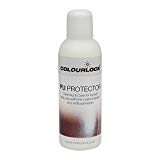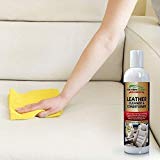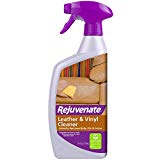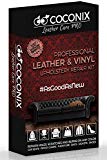PU leather is the material of choice for a massage table’s upholstery. It is cost-effective and easy to produce. That is why most premium and inexpensive massage tables make use of it. PU is also ideal for massage tables because of its soft, thermoplastic, and lightweight qualities.
PU is just one of two main types of faux leather. The other one is PVC, or more commonly known as vinyl. Both are loosely called faux leather, synthetic leather, artificial leather, vegan leather, pleather, and many others.
PU Leather Uses
PU stands for polyurethane. It has a broad range of properties and is found in a lot of things that we use everyday, such as mobile phones, cars, carpets, shoes, hardcover books, and many more.
PU is put together with other textile in order to create a fabric that nearly looks like real leather. Sometimes, it is mixed with real animal hide, which results in bicast leather.
Watch: How Pleather Is Made
Strengths and Weaknesses
PU may have many positive qualities, but its kryptonite is heat and moisture. Even though chemicals are added to the mix to make PU resistant to fire, scratches, or sunlight, they still don’t guarantee 100% protection. The material will eventually weaken due to wear and tear. Leave faux leather to these elements for a long time, and it will horribly degrade.

In humid environments (places that are usually near the Earth’s equator), PU leather can degrade more easily due to perspiration. Imagine being in a sauna even if the occasion doesn’t call for it. That’s what you’d feel like in places with relatively high humidity.
Since PU is not breathable, moist skin can easily stick to it upon contact. Furthermore, sweat isn’t just some kind of liquid. It also has other stuff mixed in, such as ammonia, sodium, sugar, and bacteria.
PU Leather Maintenance
Faux leather requires proper care like its genuine counterpart. Even the highest quality of synthetic leather can degrade like paper in a short amount of time if not taken care of adequately. Below are some tips to prolong the lifespan of PU leather:
1. Use in a Cool and Dry Workspace
PU leather is ideal in places where there is ample air conditioning, or where the temperature is naturally low. It can live longer in environments where heat and moisture are at a minimum.
2. Clean It Regularly
Having a consistent cleaning schedule will significantly extend the life of PU leather. For instance, if a massage table is used 8 hours daily, then vacuum and wipe it off with damp microfiber at the end of the day. The same is true for computer chairs. It’s easy to do and does not take too long.
3. Avoid Exposure to Heat and Moisture
This might not be possible in many setups because products that use PU leather often come in contact with human skin. Whether it’s your wallet, bag, massage or Reiki table, car seat, or sofa, there’s a sizable chance that oils and sweat from the skin will transfer over to the faux leather.
There may be little that can be done with wallets and bags, but they can be easily replaced. Huge items on the other hand, need to be protected so that they don’t get replaced again and again.

In the case of massage tables, there are massage table warmers and massage table sheets for protection. They don’t just protect the massage table, they provide purpose and aesthetics as well. Covering the table with a sheet and a warmer will add a couple of protective layers where moisture and heat simply cannot penetrate.
4. Use It For Its Intended Purpose
Use a massage table for massage or Reiki sessions. Likewise, use an office chair for office work. PU leather does not like too much pressure or friction. Putting unnecessary objects on it for a longer period of time can cause damage that’s beyond repair.
5. Use Leather Cleaners
Several leather cleaners, sprays, conditioners, and protectors are available in the market today. Some of them are all-in-one solutions, which means that they clean, condition, and protect any type of synthetic leather. Listed below are some of the most popular ones:
6. If All Else Fails, Try a Faux Leather Repair Kit
If you’re thinking about throwing out your faux leather items that seem to be irreparable, try out these products first:
Artificial Leather vs. The Real Thing
Knowing the real thing alongside fake ones can help you decide whether the merchandise you’re buying is right for its price. Nowadays, the manufacturing of synthetic leather has greatly improved and has become more efficient to the point that visual inspection just doesn’t work anymore.
Industry experts have come up with a few simple tests that can discern faux leather from genuine leather:
Water Drop Test

Faux leather is usually coated with polyurethane or PVC. Both resist water and will quickly dry up when cleaned with a towel. Genuine leather on the other hand, absorbs some of it and will leave signs of wetness for a short time before completely drying up.
Odor Test

Faux leather that just came out of the factory has a distinct chemical smell that is not present in organic animal hide. Owners of new portable massage tables often complain about the odor of PU leather during unboxing.
Surface Test
The surface of faux leather feels plasticky. It also does not stretch like that of genuine leather. As a result, faux leather will crack or tear when pulled away excessively. Remember, real leather is made from animal hide. It bends and wrinkles naturally.



















